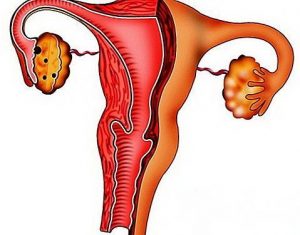Colpitis: a disease that requires attention

Are you concerned about itching and burning in the genital area, swelling and redness? Perhaps this is colpitis – a disease with which every third woman faces at different periods of life.
Colpitis (vaginitis) is an inflammatory process in the vagina and is one of the most common diseases in gynecology. Also, this disease can cover the external genital organs – the vulva. One of the most common types of colpitis familiar to most women is thrush.
Most often, colpitis occurs in women of childbearing age, but periodically it is observed in women who have experienced menopause, and even in children, including newborns.
Manifestations of colpitis can significantly reduce the quality of a woman’s life, cause constant discomfort, complicate sex life, and even cause a deterioration in relations with a sexual partner. After all, it is not easy to lead a usual way of life, live, work and rest as usual, when there are constant itching, burning, mucous or purulent discharge, pain in the genital area. All this can be accompanied by the appearance of an unpleasant odor, which brings additional experiences to the woman.
In an effort to get rid of discomfort, some women listen to the advice of relatives, friends and try to heal themselves, armed with recipes of traditional medicine. And they make a big mistake.
Why is self-medication of colpitis dangerous?
There are several types of colpitis that require different treatment. If a woman tries to be treated without visiting a gynecologist and takes medications, guided by articles on the Web or the story of a friend, whom “this pill helped in exactly the same situation,” there is a risk that vaginitis will become chronic over time.
In addition, improper treatment can lead to the spread of inflammation higher into the uterus and appendages. And this becomes the cause of endometritis, cervical erosion, infertility and other serious consequences that can be irreparable.
No advertised drugs against thrush, applications, tinctures, douching and herbal decoctions, recipes for which any site about folk medicine is rich in, can guarantee to help get rid of colpitis. Only the help of an experienced doctor, timely diagnosis and treatment, taking into account the causative agent of the disease, will lead to recovery.
Diagnostics and treatment of colpitis
Colpitis diagnosis is based on examination of the vagina and cervix – in the presence of inflammation, the mucous membrane looks thickened and friable, its color is bright scarlet. There may also be a mucous or purulent plaque. In addition to examination, colposcopy, bacterial culture, ultrasound and other diagnostic methods are used.
In most cases, combination therapy for vaginitis is based on the external and internal use of drugs, depending on the type of disease, the patient’s age and concomitant diseases. External preparations include vaginal suppositories, suppositories, tablets, capsules, douches, drug-soaked tampons, cream and gel in applicators, special gels and lotions for intimate hygiene.
You may also need to take medications aimed at increasing the body’s immune defenses and restoring the correct metabolism.
Colpitis types
Primary colpitis begins its development immediately in the vaginal area, and the secondary form of this disease can develop with the spread of infection from the external genital area or uterus.
Acute colpitis usually makes itself felt with violent manifestations of symptoms and a significant deterioration in well-being. Correct and timely treatment will help to completely get rid of this disease. If the inflammatory process becomes chronic, this leads to periodic relapses of vaginitis. In this case, coping with the manifestation of the disease is much more difficult.
Bacterial vaginosis
Bacterial vaginosis is a disease in which the balance between normal and opportunistic vaginal microflora is disturbed. There is a sharp decrease in the number of lactobacilli, which produce useful lactic acid. Because of this, the pH of the vagina changes, a shift to the alkaline side is observed, which leads to the development of vaginosis and the appearance of unpleasant symptoms.
Candidiasis (thrush)
Candidiasis is a disease that affects the lining of the genitals. Its development occurs due to infection of the woman’s body with yeast-like fungi of the genus Candida. Most often occurs in women of reproductive age, but can also occur in girls and men, affecting the glans penis and foreskin. Chronic candidiasis is characterized by a recurrent course and resistance to antifungal therapy.
Specific colpitis
Sexually transmitted diseases, including trichomoniasis, chlamydia, gonorrhea and syphilis, become the cause of the development of specific colpitis. The fight against this type of colpitis is based on the treatment of the underlying disease and its consequences. It is important that both sex partners are treated.
Atrophic colpitis
Atrophic colpitis develops against the background of physiological aging of the body due to a deficiency of female sex hormones – estrogens. Thinning of the stratified epithelium of the vagina can lead to dryness, itching, redness of the vaginal mucosa, pain and discomfort during intercourse and during urination.
The reasons for the development of colpitis
Among the factors that increase the risk of developing colpitis:
sexually transmitted diseases;
uncontrolled intake of antibiotics;
diseases of internal organs;
trauma to the vaginal mucosa, including abortion and childbirth;
allergy;
non-observance of the rules of personal hygiene;
wearing uncomfortable and tight synthetic underwear;
unhealthy diet with a predominance of fatty, fried and spicy foods.
Colpitis symptoms
Make an urgent appointment with your gynecologist if you experience any of the following symptoms:
itching https://en.wikipedia.org/wiki/Itch and burning in the vulva;
profuse mucous or purulent discharge;
swelling in the external genital area;
discomfort during intercourse;
painful urination;
pain in the lower abdomen.


